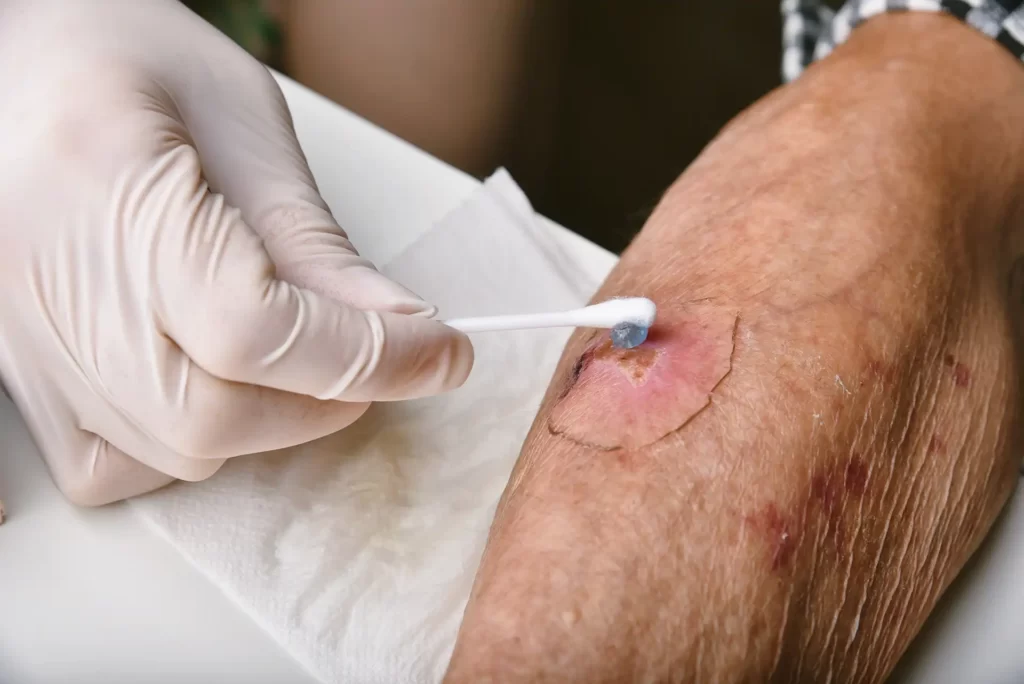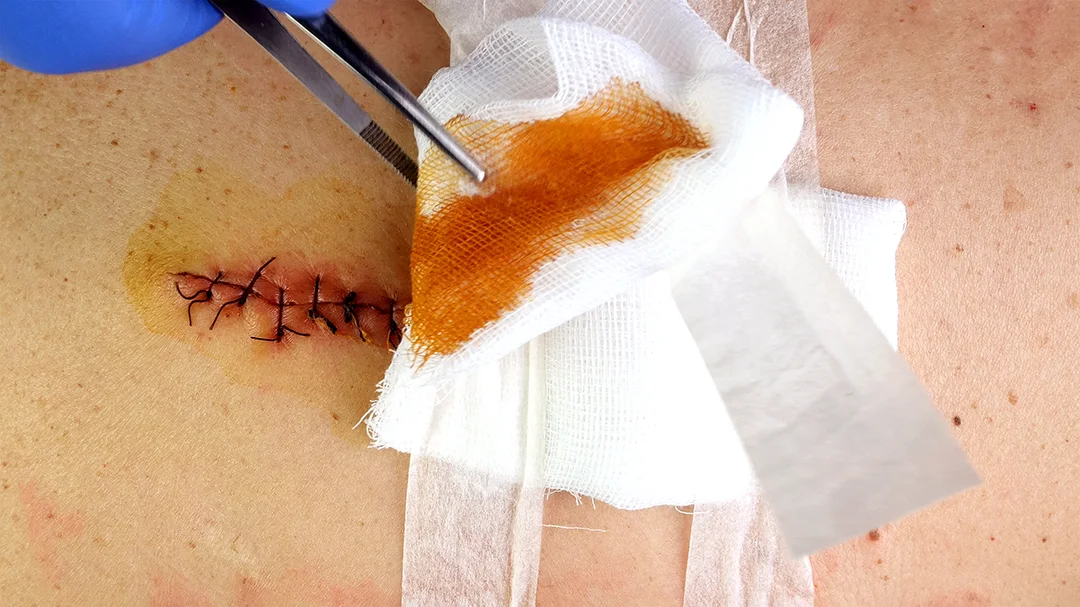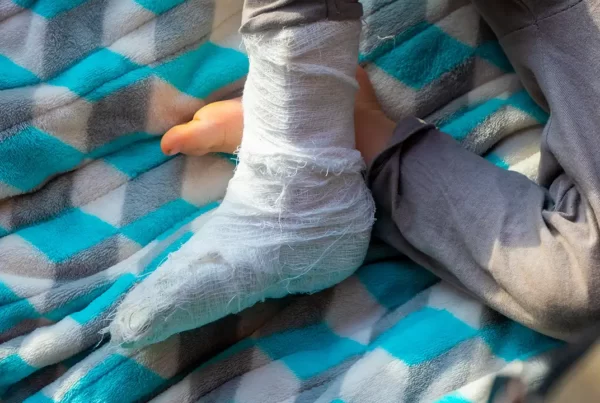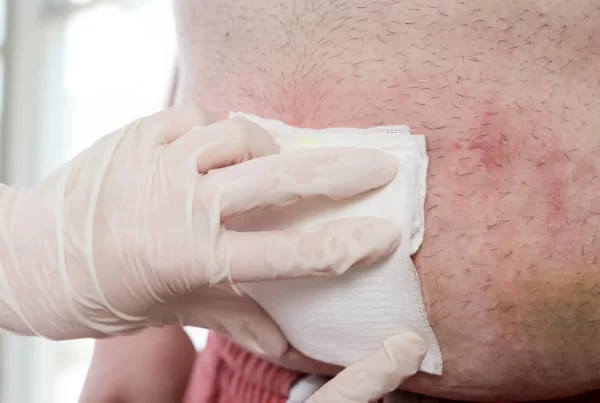If you’re a diabetic, then learning about diabetic ulcers is part of understanding how to manage your condition. Diabetic ulcers are wounds that develop on the feet and lower legs due to uncontrolled sugar levels in the blood combined with other conditions like too much pressure on certain areas of your body or infection. While having diabetes puts you at risk for developing these sores, there are steps you can take to prevent them from occurring or help them heal more quickly if they do appear. In this blog post, we’ll explore what diabetic ulcers are exactly, why diabetics can get them so easily, what warning signs to look out for and treatments available should a sore start to form.
Understanding Diabetic Ulcers – Definition and Causes
Diabetic ulcers are a common, yet serious complication of diabetes. The condition is defined as open or breaks in the skin and underlying tissue that occur mostly on the feet, but can also appear on other areas of the body. They tend to be slow to heal, and can be very painful given their nature and lack of blood circulation that comes as a result of uncontrolled diabetes. Causes for diabetic ulcers include elevated sugar levels, decreased sensation in diabetics’ feet due to nerve damage, poor healing abilities due to prolonged high sugar levels and injury due to footwear being too tight or too loose. Diabetics should protect their feet by checking daily for any signs of infection and speaking with a doctor if symptoms arise.
Signs and Symptoms of a Diabetic Ulcer
Diabetic ulcers can be debilitating and cause serious complications if left untreated. People with diabetes are particularly vulnerable to developing diabetic ulcers which are open sores on the skin caused by decreased blood flow due to poor circulation. Fortunately, there are signs and symptoms you can look out for in order to catch the early warning signs. Commonly, a diabetic ulcer may first appear as a red spot of discoloration before gradually increasing in size and eventually forming a painless ulcer. In many instances, these wounds may be accompanied by an unusual odor or even drainage of fluids. It is important to keep an eye out for any suspicious changes as quickly treating an ulcer is key in preventing further health issues.
Prevention Tips for Diabetics to Avoid Developing an Ulcer
For diabetics, developing an ulcer can be a serious and painful complication. Proper prevention is essential in order to reduce the risk of diabetic ulcers. Diabetics should speak with their healthcare provider about any skin breaks or sores that don’t heal within two weeks, as well as regularly inspecting their feet for signs of injury and abrasions. Keeping blood sugar levels under control is also critical for reducing the chances of developing a diabetic ulcer—keeping an A1C below 7% can reduce the possibilities significantly. Additionally, wearing shoes at all times (even around the house) can help prevent skin injuries. Finally, drinking plenty of water throughout the day and avoiding diets high in processed carbohydrates and fats can help keep the body healthy and less prone to developing serious complications such as diabetic ulcers.
Treatments for a Diabetic Ulcer

Managing a diabetic ulcer can be a challenging yet rewarding process. Typically, the treatments used to address a diabetic ulcer are multifaceted and based on the severity of the wound. First, it is critical to control blood sugar levels as this has a direct influence on the body’s ability to heal wounds. This can be achieved through proper diet and exercise but may also require medication. Compression therapy using specially designed wraps or bandages is also recommended since it can help reduce swelling and decrease pain, while helping to support the healing process. Additionally, topical medications such as antibiotics may be necessary depending on the condition of the wound, and further surgery may be considered in extreme cases. With perseverance, individuals with diabetic ulcers can successfully manage their condition and experience improved health outcomes.
How to Care for Your Feet if You Have Diabetes
Having diabetes means that you need to pay special attention to your feet. This is especially important if you are at risk of developing a diabetic ulcer, a foot wound that can take months or even years to heal due to the impact of diabetes on blood flow in the feet. Thankfully, there are several steps you can take to prevent such an ulcer from forming. For instance, you should always wear shoes that fit well and look for any pressure points that may indicate poor fit – this is critical for avoiding blisters. Additionally, be sure to examine your feet every day for any cuts, bruises, blisters or other wounds which could become infected if left untreated. If found, apply a sterile bandage and contact your doctor immediately. Finally, use moisturizing cream regularly on your feet in order to keep them soft and prevent cracking or splitting skin. By following these simple measures and taking care of your feet daily, you will provide yourself with the maximum amount of protection against a diabetic ulcer.
What Support Services Are Available for People With Diabetes

People living with diabetes often require additional support to maintain their health. This can include providing education on how to monitor blood sugar levels, nutritional plans, exercise recommendations, and medical attention for diabetic ulcers and other medical complications. A variety of resources are available to assist those with diabetes, such as helpful online educational tools including videos, podcasts, and articles; support groups that provide a sense of camaraderie; and monitoring apps to track food intake and physical activity. In the event of diabetic ulcer development or an emergency, many organizations provide medications and additional medical care at no cost. With the range of services available for people living with diabetes, it’s possible to achieve better health outcomes in a manner best suited for individual needs.
Diabetic ulcers can be a serious complication of diabetes and require immediate care. Thankfully, there are several preventative steps that diabetics can take to avoid developing an ulcer in the first place. Further, if you find yourself diagnosed with a diabetic ulcer, there are treatments available to reduce the risk of it becoming infected or progressing further. It is important to follow your doctor’s instructions for caring for your feet if you have diabetes and seek out other support services as needed to stay healthy. With these approaches, people with diabetes can reduce their risk of more serious problems associated with diabetic ulcers and maintain a better quality of life. Keep in mind that diabetic foot care is an essential part of managing your diabetes—it’s never too late to make changes for the better!






